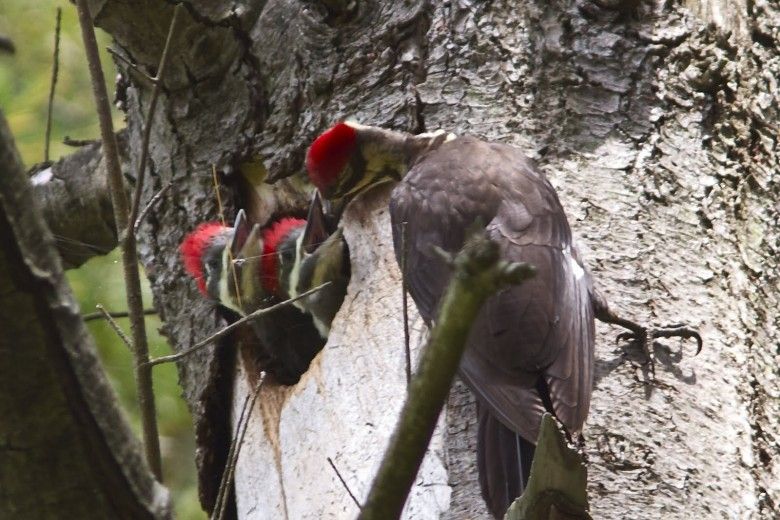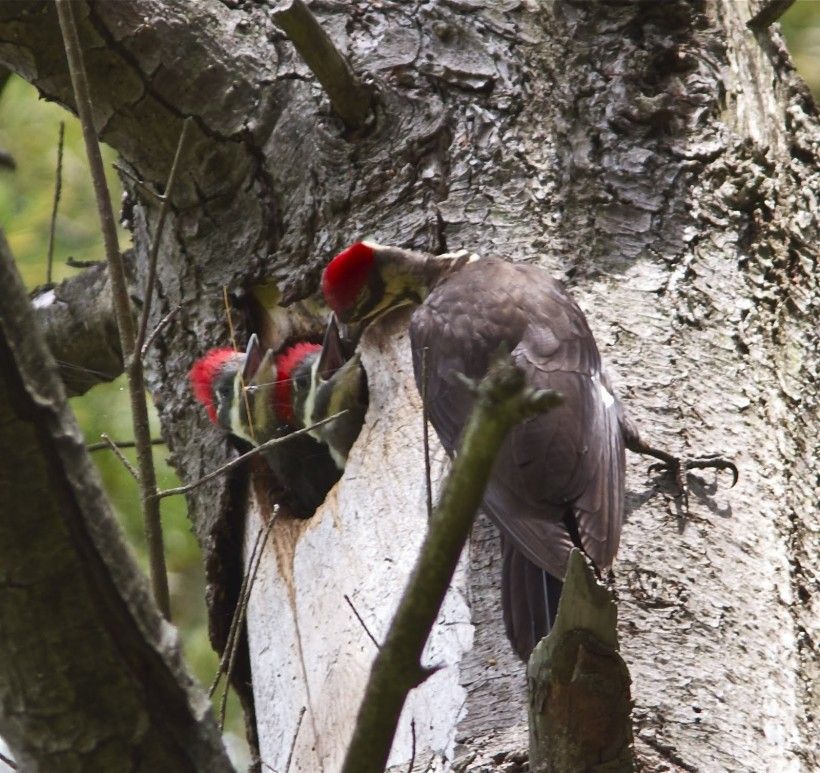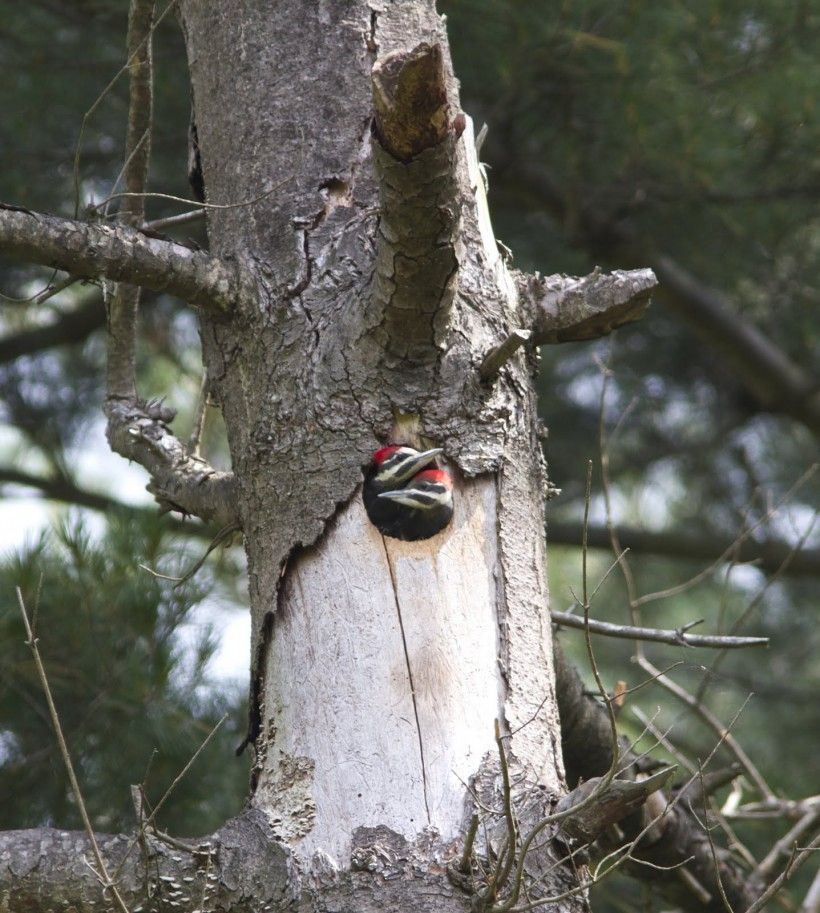The Value of Snags

Time and time again we hear property owners say, "That tree is dead. I am going to have to cut it down." Our response is usually, "Why?"
Standing dead trees, generally referred to as snags, provide critical habitat for many species of wildlife.
Dead wood attracts insects, fungi and lichen which are all important sources of food for many species. Cavities in the trunk provide nesting sites for birds, bats, raccoons and squirrels. Leaving dead wood in place is important to the health of the forest itself, as decaying logs return vital nutrients to the soil. If a dead tree is not threatening your home, leave it standing.
Snags are critical habitat for one of our most charismatic local bird species, the Pileated Woodpecker. A white pine tree at our Waterloo Mills Preserve that succumbed to damage from a lightning strike is currently providing a nest cavity for a family of Pileated Woodpeckers. We were lucky enough to catch a glimpse of the nestlings at feeding time.


After seeing these incredible photos, who would even want to cut down a snag?